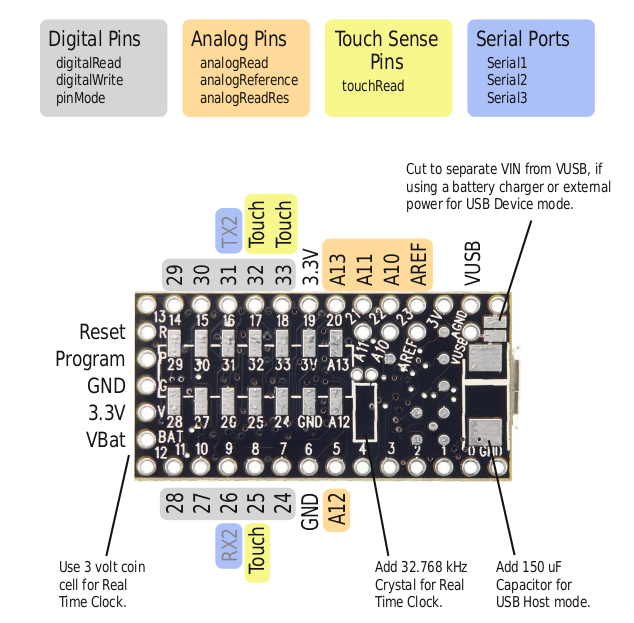Hello again.
I am planning on running the Teensy from an external power supply but I also want to, when needed, be able to run from the usb in.
When I first bought the teensy and told Paul what I wanted to do he said:
So, today I put the teensy into the breadboard and ran some LEDs from it for the first time. I first ran it from the usb. Once I had my test sketch in place I wanted to test it from the battery so I went ahead and cut apart the pads between VIN and VUSB (or at least I think I did). I am putting up an image to show the trace I cut between the 2 pads.


After I did that, I tested it on the meter to make sure the pads were cut then I put it back in the breadboard, hooked up external power and everything seemed to work ok. The strip ran from the test sketch I had uploaded.
But then I plugged the usb back in and disconnected the external power and had nothing. I had no power at the processor and therefore, of course, could not upload any changes to the sketch or anything like that.
So, I then resoldered the pads together and plugged the usb in and could once again talk to the processor and power the test strip. I then connected up external power and after it was connected, unplugged the usb and everything kept running fine. I then replugged in the usb and again everything kept running and then unplugged external and everything kept running. This seems to be what I wanted and from what Paul had said what I assumed I would get with the pads disconnected.
So, what did I do wrong?
Thanks in advance for any insight or advice. It is all very much appreciated.
I am planning on running the Teensy from an external power supply but I also want to, when needed, be able to run from the usb in.
When I first bought the teensy and told Paul what I wanted to do he said:
Paul's email said:If you connect a battery to VIN and you also use USB, cut the pads apart
on the bottom side, to separate VUSB from VIN. You wouldn't want the
USB trying to charge the battery in an uncontrolled way, or the battery
attempting to power your computer when it's off!
So, today I put the teensy into the breadboard and ran some LEDs from it for the first time. I first ran it from the usb. Once I had my test sketch in place I wanted to test it from the battery so I went ahead and cut apart the pads between VIN and VUSB (or at least I think I did). I am putting up an image to show the trace I cut between the 2 pads.


After I did that, I tested it on the meter to make sure the pads were cut then I put it back in the breadboard, hooked up external power and everything seemed to work ok. The strip ran from the test sketch I had uploaded.
But then I plugged the usb back in and disconnected the external power and had nothing. I had no power at the processor and therefore, of course, could not upload any changes to the sketch or anything like that.
So, I then resoldered the pads together and plugged the usb in and could once again talk to the processor and power the test strip. I then connected up external power and after it was connected, unplugged the usb and everything kept running fine. I then replugged in the usb and again everything kept running and then unplugged external and everything kept running. This seems to be what I wanted and from what Paul had said what I assumed I would get with the pads disconnected.
So, what did I do wrong?
Thanks in advance for any insight or advice. It is all very much appreciated.
Last edited:



